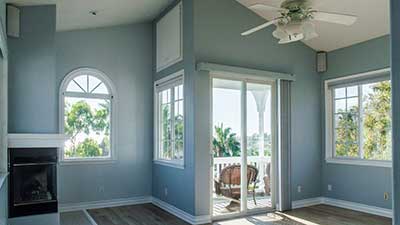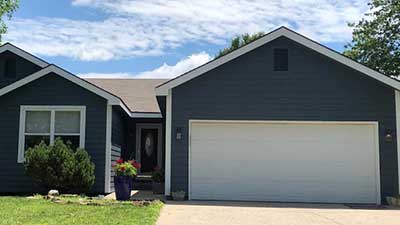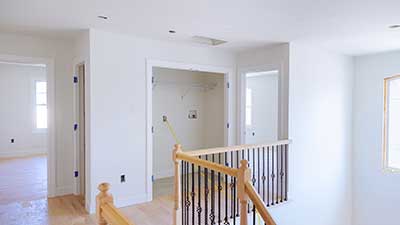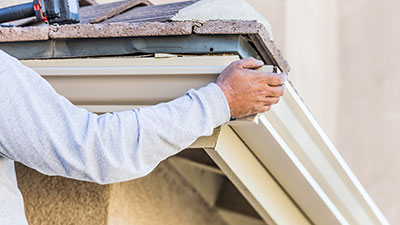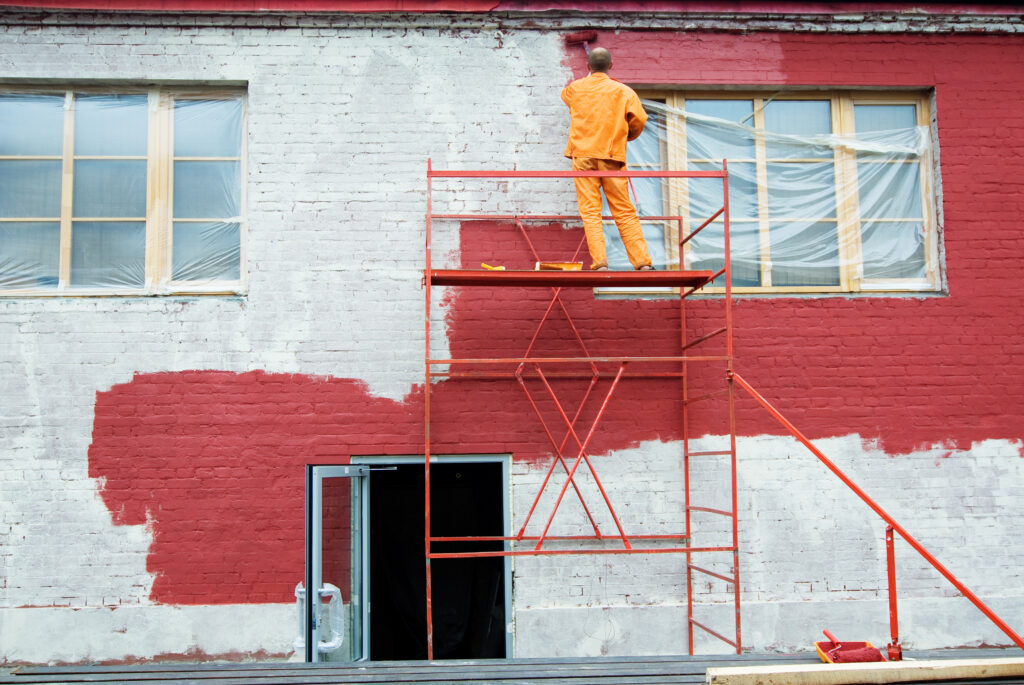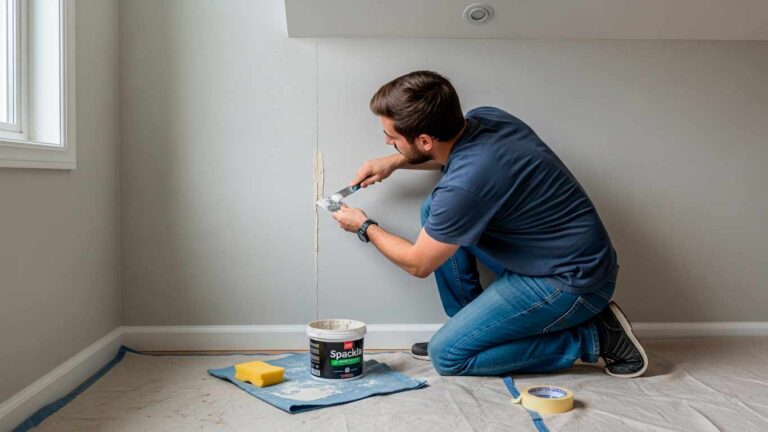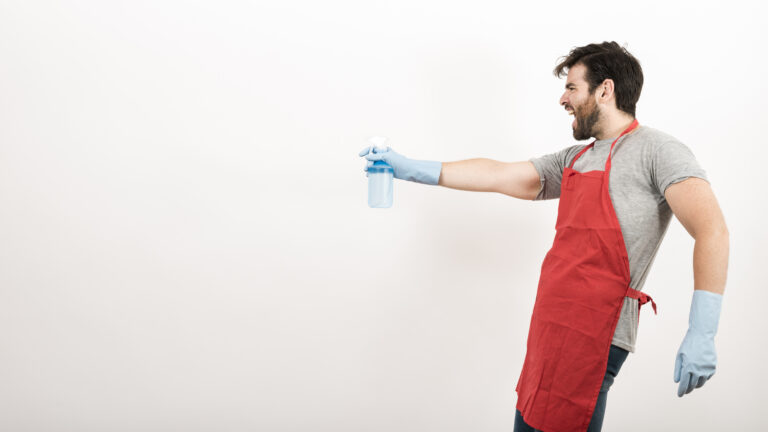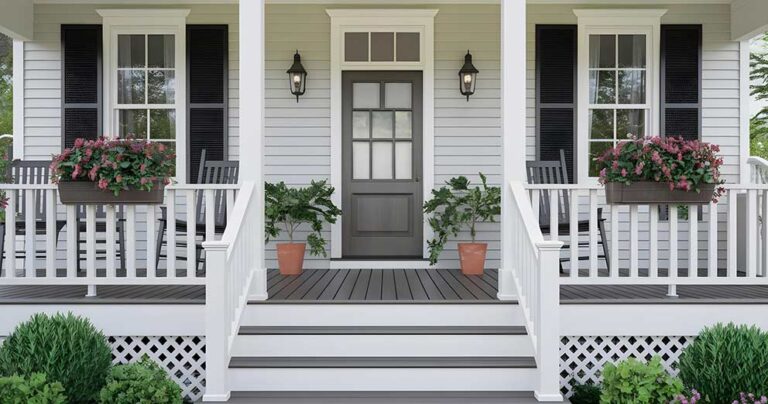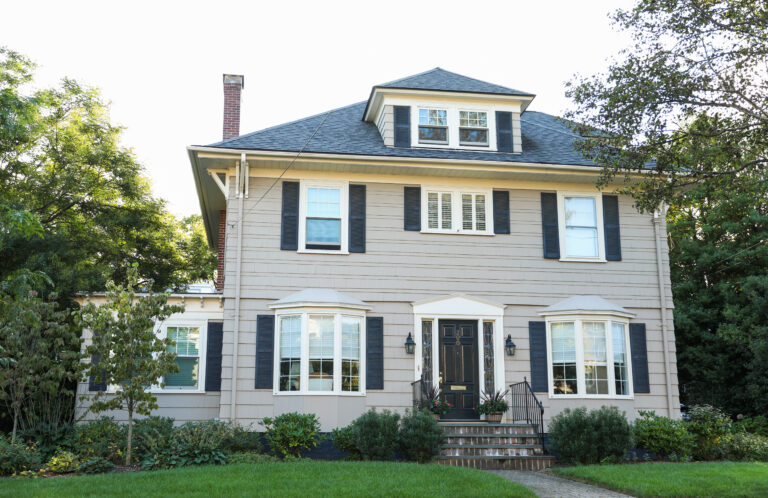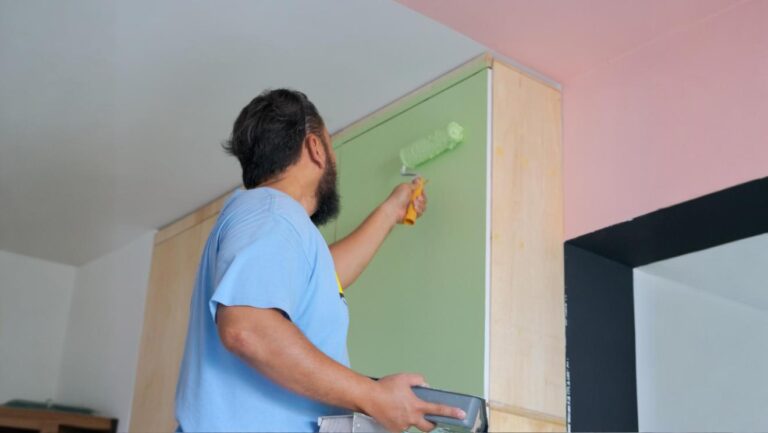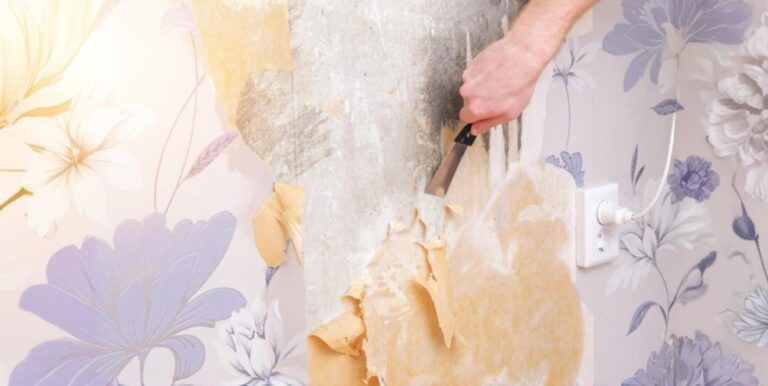Painting the exterior of your house is more than just a way to keep it looking fresh—it’s an essential part of protecting it from the elements. But how often should you repaint the exterior of your house? The answer isn’t one-size-fits-all. Several environmental factors and materials affect how long a coat of paint lasts, and understanding these can save you time and money.
Whether you’re planning your first paint job or repainting to freshen things up, it’s important to get the timing right to protect your investment.
Key Takeaways
- Most homes need repainting every 5 to 10 years, depending on factors like material and climate.
- Wood siding requires more frequent repainting, while aluminum and vinyl siding tend to last longer.
- Peeling and bubbling paint are signs of moisture issues and improper surface preparation.
- Proper surface preparation, including cleaning and using a primer, prevents common issues like bubbling and ensures a longer-lasting paint job.
- The best time to paint is in mild weather, avoiding extreme heat or humidity to ensure even drying.
- Regular maintenance like washing and early touch-ups will extend the life of your exterior paint job and prevent costly repairs.
How Often Should You Paint the Exterior of a House?
Most homes need to be repainted every 5 to 10 years, but the exact timing can vary depending on factors like paint type, surface material, and environmental factors.
Homes with wood siding need more frequent attention—usually every 3 to 7 years—because wood expands and contracts with changes in moisture, leading to cracks and peeling paint. Meanwhile, aluminum siding typically lasts around 5 years before requiring a new coat.
Stucco holds up well for 5 to 6 years, while vinyl siding can go 10-12 years before needing a repaint. Brick requires the least frequent painting, potentially lasting 15-20 years when properly maintained. Cement fiberboard offers superior durability, typically lasting 10-15 years between paint jobs.
Ultimately, paying attention to the signs that it’s time for a new exterior paint will help you avoid more costly repairs.
Climate-Specific Guidelines
Coastal properties face unique challenges from salt air damage, requiring repainting every 1-2 years due to corrosive salt spray and intense UV exposure. Florida and other Southern climates demand more frequent painting cycles due to high humidity and year-round weather exposure.
For optimal results, spring and fall provide the best seasonal timing for exterior painting projects across most regions.
Factors Affecting How Long Exterior Paint Lasts
The longevity of your exterior paint depends primarily on weather and surface type. High humidity, rain, and extreme heat can speed up paint deterioration, causing fading from UV radiation and issues like peeling and bubbling from excess moisture.
Moisture damage prevention strategies include proper surface preparation and choosing paint formulated for your climate. Two-coat application has become the professional standard, significantly extending paint life compared to single-coat applications.
Wood siding, which is more prone to wear and tear, typically requires more frequent painting. Regular painting provides essential structural protection benefits by sealing wood against moisture infiltration.
Using high-quality paint suited for exterior surfaces and conditions can significantly extend the lifespan of your paint job.
Signs It’s Time to Repaint
It’s essential to recognize when it’s time to give your home a fresh coat of paint. Key warning signs include fading and chalking (powdery residue), cracked or hard caulking around windows and doors, water stains or discoloration, mildew and mold growth, and visible gaps between siding boards.
Peeling paint, cracks, or bubbling are all signs that your home’s exterior is no longer protected. Flaking paint can also be an indicator that moisture is seeping into the material, which can lead to structural damage if left unchecked.
If you notice any of these issues, it’s best to plan your next exterior paint job early to avoid costly repairs down the line.
Proper Preparation for a Successful Exterior Paint Job
Proper preparation is the key to a durable and long-lasting paint job. Surface preparation specifics include scraping loose paint, sanding rough areas, and filling holes or cracks.
Before starting, use a pressure washer to thoroughly clean the surface. Dirt, mildew, and old paint can prevent the new paint from adhering properly, leading to bubbling or cracking down the line. Ensure the surface is completely dry before you begin painting.
Priming is another crucial step, especially if the previous paint job has deteriorated significantly or you’re making a dramatic color change. A high-quality primer helps the paint adhere better to the surface.
The optimal temperature for exterior painting is around 60°F, though acceptable ranges extend from 50-85°F. Avoid painting during hot, humid, or rainy conditions as this can lead to uneven drying.
Materials and Tools You Need for Painting Exterior Surfaces
Getting a professional-quality paint job requires the right materials and tools. First, always use a primer that’s appropriate for the surface. For wood siding, an oil-based primer works best, while stucco or masonry should be prepped with a masonry primer.
For larger areas, a paint sprayer can make quick work of the job, delivering even coverage in less time than traditional rollers. However, rollers and brushes are essential for detailed work and for cutting in around windows and doors.
A pressure washer is a must for proper preparation. Cleaning the surface before painting removes dirt, debris, and old paint that might prevent the new paint from sticking properly.
Best Time to Paint the Exterior of Your House
Timing is everything when it comes to painting the exterior of your home. The best time to paint is during dry, mild weather conditions, usually in the spring or fall when temperatures range between 50 and 85 degrees Fahrenheit.
Spring and fall provide optimal conditions for exterior painting across most regions, offering moderate temperatures and lower humidity.
Early mornings and late afternoons are the best times of day to paint since the sun is less intense. Painting in direct sunlight can cause the paint to dry too quickly, leading to cracks and peeling.
Cost vs. Frequency: Making Smart Investment Decisions
Premium paint costing 20-30% more upfront often extends paint life by 2-3 years. Preventive maintenance through regular washing and touch-ups can extend paint life by up to 40%, providing significant cost savings. Property value protection through regular exterior maintenance typically returns 70-80% of investment in resale value.
How to Extend the Life of Your Exterior Paint Job
Once your exterior house is freshly painted, you’ll want to keep it looking great for as long as possible. Regular maintenance is key. Wash your house annually with mild soap and water or use a pressure washer on a low setting to remove dirt and grime.
Inspect your home for cracks, peeling, or faded areas, and handle touch-ups early. Repainting sooner rather than later when issues arise will save you from more extensive and costly repairs down the road.
And if you ever need help achieving a professional-quality paint job, OnDemand Painters is ready to assist with expert techniques and the best paint for your home’s unique needs.
FAQ
How often should you repaint your house’s exterior?
You should typically repaint your house exterior every 5 to 10 years, depending on paint quality and wear and tear from the weather.
What are the signs my home’s exterior needs a new coat of paint?
Look for wear and tear like peeling, cracking, or faded curb appeal, which signal it’s time for a new paint job.
How does the quality of exterior paint impact the lifespan of a paint job?
The lifespan of exterior paint can vary based on the paint quality, with higher-quality products lasting longer and resisting wear and tear better.
How often should coastal homes be painted?
Coastal properties typically need repainting every 1-2 years due to salt air damage and intense UV exposure that accelerates paint deterioration.
Why is it important to regularly repaint the entire house?
Regularly repainting your entire house helps maintain curb appeal and protects your home’s exterior from weather damage.
How often does aluminum siding need repainting and what about cracked caulking?
Aluminum siding typically needs repainting every 5 years, but cracked caulking around windows and doors is a sign you may need to repaint sooner to prevent moisture damage.






